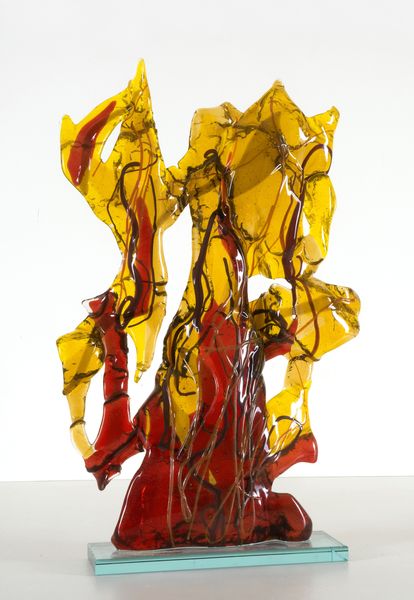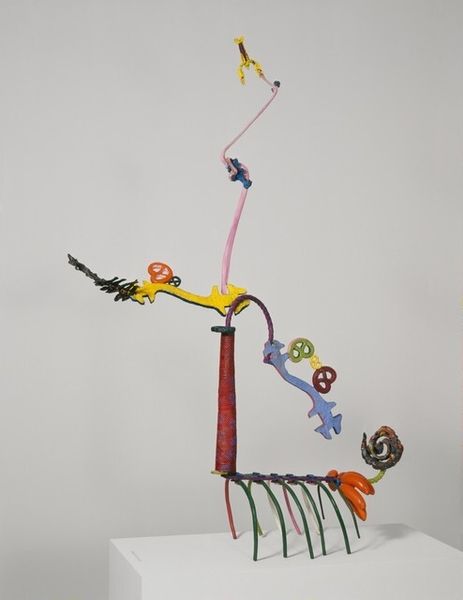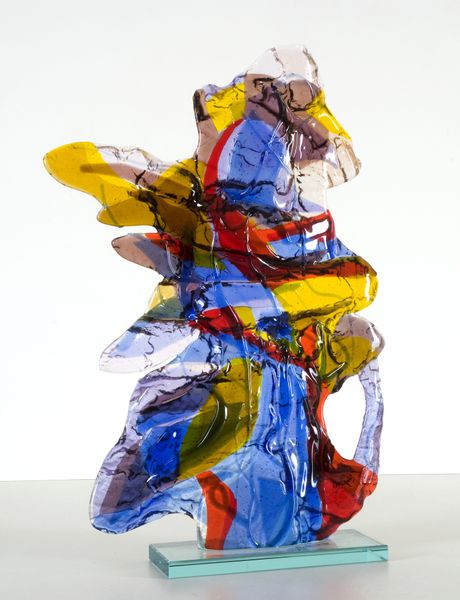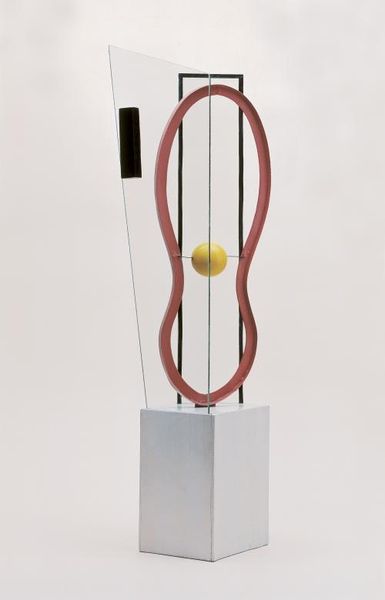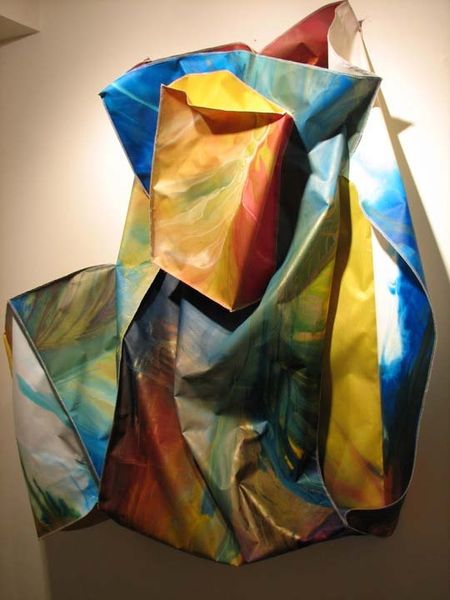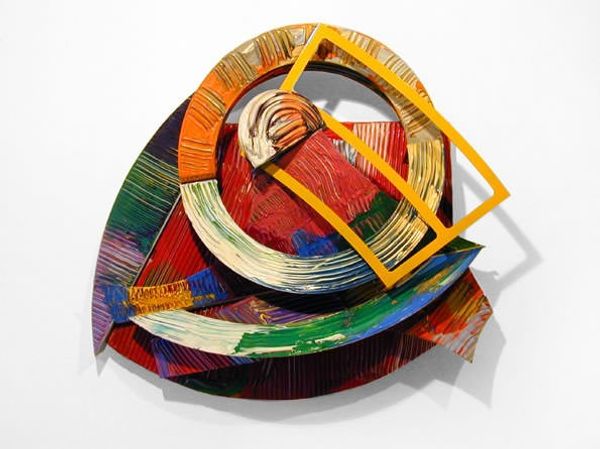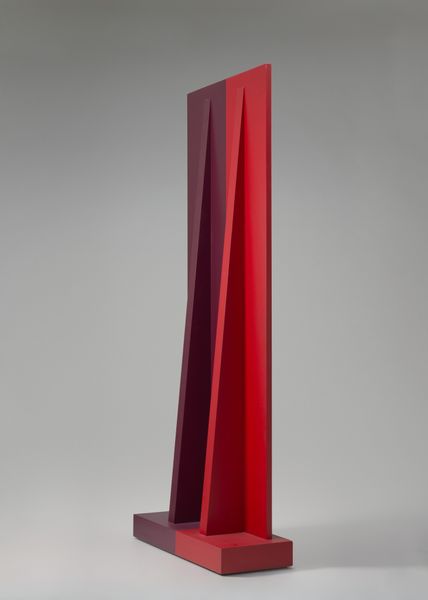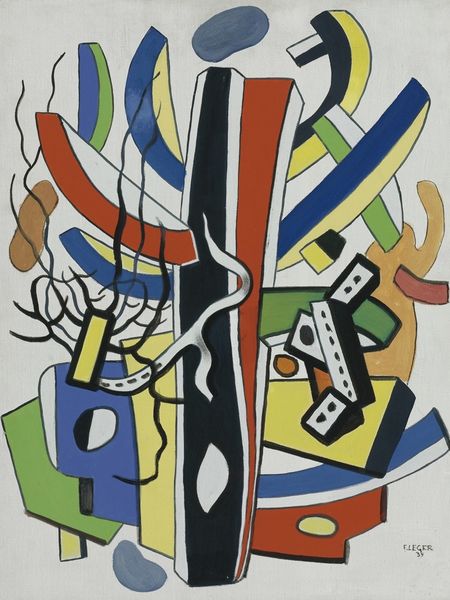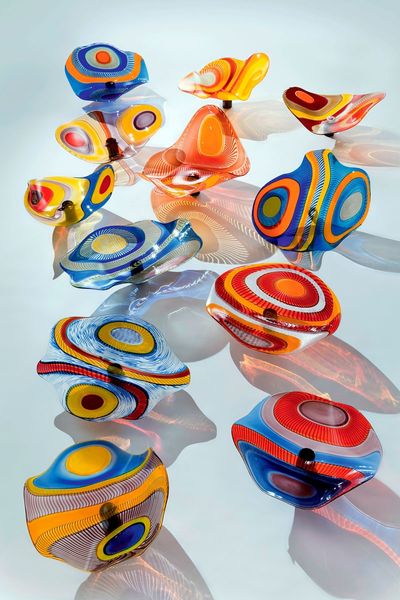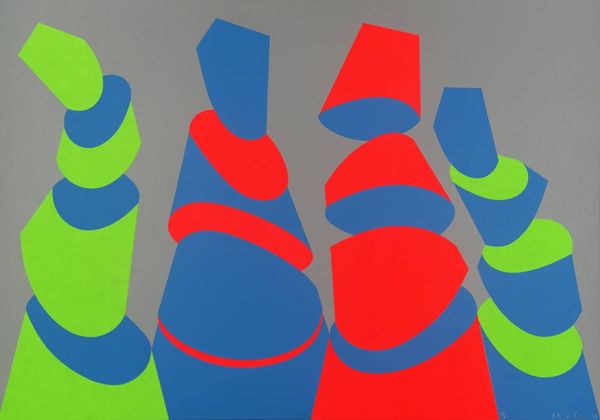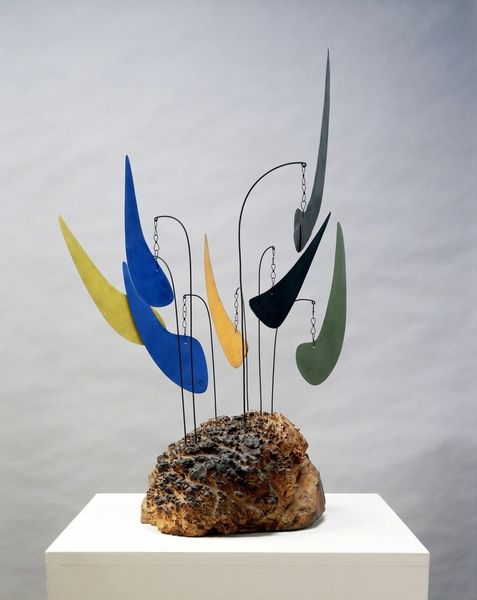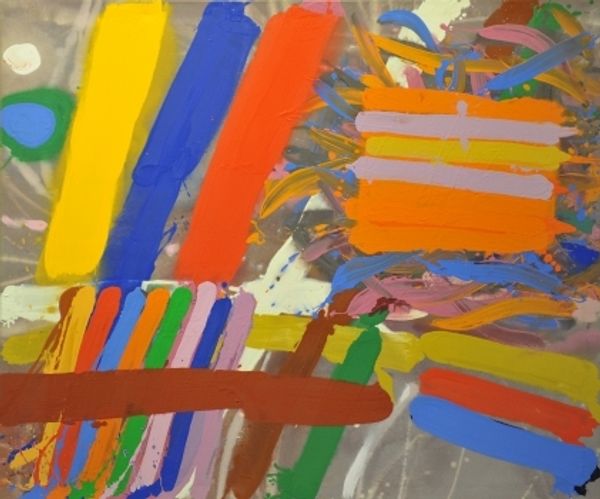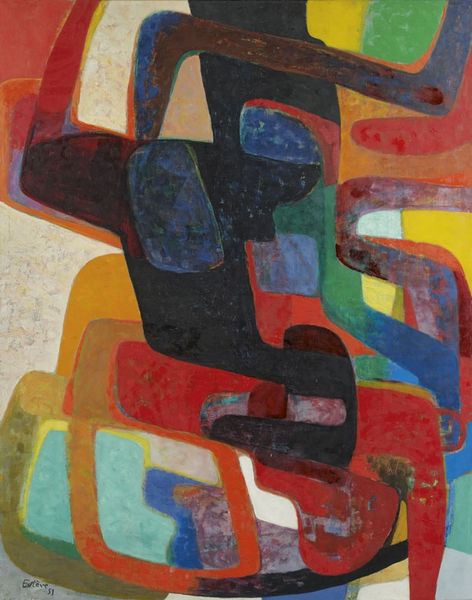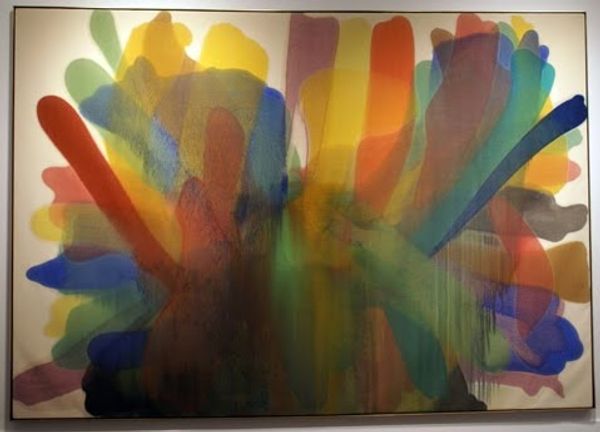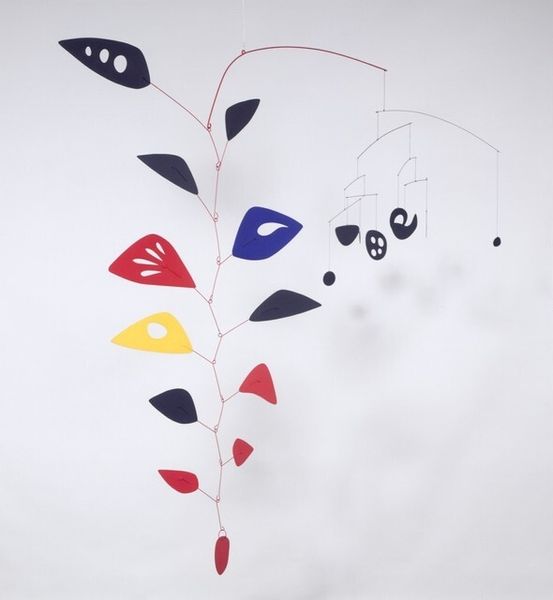
Copyright: Roy Lichtenstein,Fair Use
Curator: Here we have Roy Lichtenstein's monumental sculpture, "Tokyo Brushstrokes I and II", fabricated in 1994. The medium is painted metal, making it a durable and striking example of public art. What are your first impressions? Editor: They strike me as playful yet imposing, standing like vibrant sentinels against the landscape. There’s a dynamic tension between the flatness implied by Lichtenstein’s signature comic-book style and the imposing three-dimensionality of these forms. I'm curious how this work speaks to its intended audience. Curator: Consider Lichtenstein's career-long engagement with mass media imagery, distilling Abstract Expressionist gestures into flattened, pop-art iconography. Here, he’s taken the spontaneous brushstroke – typically laden with expressive meaning – and transformed it into something manufactured, reproducible. Does it diminish or amplify its original intent? Editor: The monumentality certainly makes a statement, doesn't it? By bringing this familiar and culturally-coded brushstroke into the public sphere at this scale, Lichtenstein is questioning high and low art distinctions, prompting us to reflect on the language of abstract expressionism. The question arises, how does accessible public art interact with social constructs? Curator: Precisely. And, the use of bright primary colors contributes to this effect, immediately drawing the viewer in, invoking familiar feelings and childhood memories. One can trace these hues through our culture for the better half of a century. It gives a feeling of comfortable continuity despite its size. Editor: Absolutely. I also read a strong connection with the post-war era and the commodification of art itself. Lichtenstein's art, in its original comic roots, serves as a commentary on accessibility and distribution, which invites scrutiny on themes of inequality, both globally and within the art market. How can art be made truly available for the people and speak for them? Curator: An intriguing notion, questioning how easily our perception of artwork as both "common" or "elite" shifts due to art movement waves over time. As we stand before these brushstrokes, these manufactured gestures frozen in time, what enduring impact do you feel this piece provides? Editor: In light of these interpretations, Lichtenstein's work opens vital dialogues about accessibility and historical context, pushing the boundaries of who gets to engage with art and what meanings they derive from it. It underscores how artists can provoke awareness of broader, deeply rooted, cultural paradigms. Curator: Indeed, these monumental 'brushstrokes' leave us contemplating art's role within the tapestry of human experience and our shared visual culture. Editor: They serve as a lasting reminder to reflect on both the historical baggage of art and its potential as an active tool for driving social consciousness.
Comments
No comments
Be the first to comment and join the conversation on the ultimate creative platform.
